posted Tuesday, 04 September 2012, 20:36 (+0800), by Martin
Firmware Update - 1/3 Stop Adjustments in Manual Mode
Late last month Phottix announced an updated version of firmware for the fantastic Phottix Odin for Canon wireless TTL flash trigger.
The most notable inclusion in firmware version 1.20 is support for 1/3 stop adjustments in manual mode. While the lack of 1/3 stop adjustments in manual mode hasn't been a big issue for me (I typically use the Odin in TTL mode, and you can get 1/3 stops with the flashes in manual mode by using the camera's flash exposure compensation), many people have been clamouring for 1/3 stops.
The Nikon version of the Phottix Odin has had support for 1/3 stop adjustments in manual mode from its initial released version, and now the Canon version also supports this feature.
Display of 1/3 Stops on the Odin TCU
Due to limitations of the display on the Odin TCU for Canon, the Phottix team have taken a creative approach to display the 1/3 stop adjustments. With previous versions of firmware, when adjusting the power output of a flash group on the TCU, the TCU's display would flash the power level, as shown in photo 1 below.
With firmware version 1.20 installed, the "+" and "-" buttons now adjust the power output of a flash group in manual mode in 1/3 stop increments. The flashing display now alternates between the base power level (ie, 1/128) and the 1/3 stop adjustment, as shown in photos 2 and 3 below.
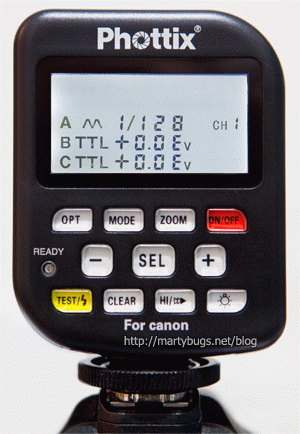
photo 1: setting group 1 output in manual mode,
power level set to 1/128 (same display as previous firmware) |
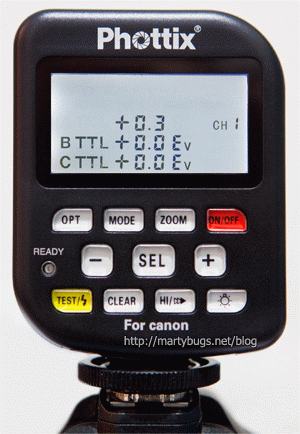
photo 2: setting group 1 output in manual mode,
power level set to 1/128 + 0.3 |
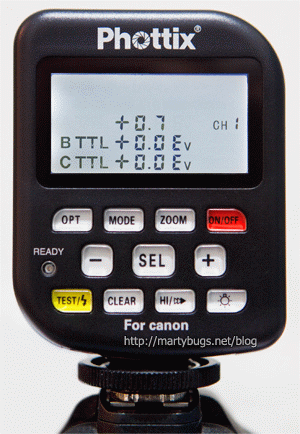
photo 3: setting group 1 output in manual mode,
power level set to 1/128 + 0.7 (which is the same as 1/64 - 0.3) |
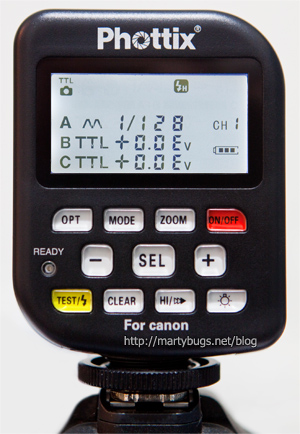
photo 4: group 1 output in manual mode,
power level set to 1/128, or is it 1/128+0.3 or 1/128+0.7 ? |
The 1/3 stop adjustments are only visible when you are in the power adjustment menu for a flash group. When you exit the power adjustment menu, the TCU's display shows the power level as the base power level, without the 1/3 stop increment being displayed, as shown in photo 4 above.
Power Levels
Note that the Odin TCU only displays the positive adjustment values, so it will display
1/128 +0.7
rather than
1/64 -0.3
Other Features in Firmware Version 1.20
Other features of firmware version 1.20 include:
- Added manual zoom settings: 20mm, 135mm and 200mm.
- 5D Mark III over exposure issues resolved.
- 650D not firing in A:B ratio mode resolved
- 600D and 430EX Flash modeling light / misfire / exposure issues resolved.
Phottix also make one additional comment about this firmware:
While the Canon 650D using an Odin TCU will trigger flashes on Odin receivers -
the AF assist lamps on these flashes will not function when triggered from a Canon 650D / Odin TCU combination.
Our development team is working on new firmware that will resolve this issues
as well as issues with Odin / Canon 1Dx compatibility. Please stay tuned for more details.
Test Results - 1/3 Stop Adjustments in Manual Mode
Using a flash meter, a London-based wedding photographer, David, tested the flash output of a 430EX and 580EX triggered with a Phottix Odin in each of the 1/3 stop increments in manual mode. The results can be viewed in this blog post, as well as David's thoughts on the Odin vs PocketWizards.
Footnote
Note that the photos in this post show a pre-release version of the Phottix Odin TCU for Canon. Silk-screen labelling on the release version is slightly different, with the "For Canon" text relocated underneath the display, and a locking symbol in its place.
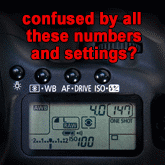


Wow! As I can see from this review this thing is really useful!
Some Canon DSLRs can do this thing with pop-up flash (60D, 7D, T4i...), but radio is much more reliable.